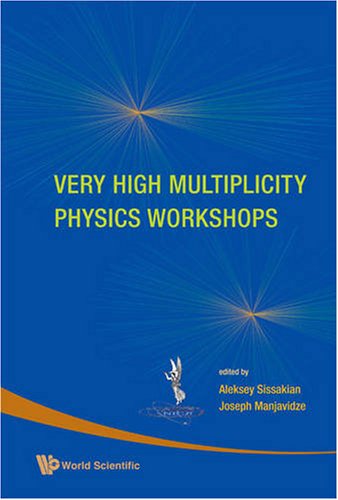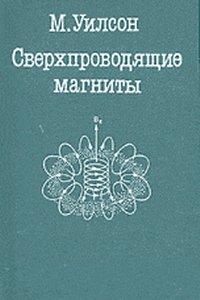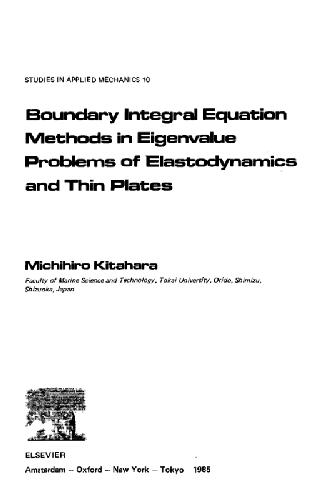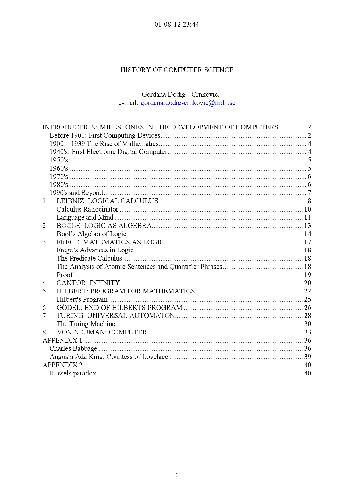Aleksey Sissakian, Joseph Manjavidze9789812834942, 981283494X
Table of contents :
CONTENTS……Page 7
PREFACE……Page 6
1. Introduction……Page 9
2. The NICA structure and operation scenario……Page 11
3. Luminosity of heavy ion collisions……Page 13
5.1. Injector……Page 17
5.2. Booster synchrotron……Page 22
5.4. The Nuclotron……Page 25
5.5. Collider……Page 26
References……Page 28
1. Introduction……Page 30
2. Physics goals……Page 31
3. Observables and Requirements for the Detector……Page 32
4. General Design……Page 35
5. Magnet Coil and Flux Return……Page 37
7. Inner Tracker (IT)……Page 38
8. Time of Flight System (TOF)……Page 39
9. Electromagnetic Calorimeter (EMC)……Page 41
10. Endcap Tracker (ECT)……Page 42
11. Zero Degree Calorimeter (ZDC)……Page 43
12. Beam–Beam Counter (BBC)……Page 45
13. Detector performance……Page 46
References……Page 47
1. Introduction……Page 50
2.1…….Page 52
2.2…….Page 53
2.3…….Page 54
3. Ising model: phase transition……Page 56
4. Ising model: stable minimum……Page 59
References……Page 61
1. Introduction……Page 63
2. BEC in Thermodynamic Limit……Page 64
3.1. Chemical Potential at Finite Volume……Page 67
3.2. Particle Number Fluctuations……Page 70
4. BEC Fluctuation Signals in High Multiplicity Events……Page 71
5. Summary……Page 74
Acknowledgments……Page 75
References……Page 76
1. Introduction……Page 78
2.1. General layout……Page 79
2.2. Event selection……Page 81
3. Wavelet analysis……Page 85
4.1. About the model……Page 89
4.2. Analysis of the obtained data……Page 90
4.3. The ! 3 0 decay……Page 93
4.4. Dibaryon mechanism……Page 95
5. Estimate of the and R production cross sections and resonance widths……Page 97
6. Conclusions……Page 99
Appendix A. Continuous wavelets with vanishing momenta……Page 100
References……Page 101
6. Correlation radii from Fast Hadron Freeze-Out Generator Iu. A. Karpenko, R. Lednicky, I. P. Lokhtin and L. V. Malinina……Page 103
References……Page 104
1. Introduction……Page 105
2. z-Scaling……Page 106
3.1. 0 mesons……Page 107
3.2. Charged hadrons……Page 108
3.3. Mean pT vs. multiplicity and collision energy……Page 110
3.4. Jets……Page 111
3.5. Similarity of charged hadron production in AA……Page 112
4. z-Scaling in pp collisions at Tevatron……Page 113
4.1. Direct photons……Page 115
4.2. Jets……Page 116
4.4. J= mesons……Page 118
4.5. D0 mesons……Page 119
4.6. B+ mesons……Page 120
4.7. (1S) mesons……Page 121
4.8. Z0;W+ bosons……Page 122
References……Page 124
1. Introduction……Page 127
2. CMS detector……Page 128
3.2. Muon background rates……Page 129
3.3.2. Dimuon reconstruction e ciency and purity……Page 131
3.3.3. J/ and mass resolutions……Page 132
4. Results……Page 133
4.1. Signal/Background ratio and statistics……Page 134
5. Discussion on the results and conclusions……Page 136
References……Page 137
1. Introduction……Page 139
2. BEC in case of two particles……Page 140
3. Stochastic field and Green’s function……Page 144
4. Green’s function and kernel operator……Page 146
5. Source size……Page 148
6. Conclusions……Page 150
References……Page 151
1. Introduction……Page 152
2. Two-particle BEC……Page 153
3. Green’s function……Page 156
4. Evolution equation……Page 158
5. Green’s function and kernel operator……Page 160
6. Stochastic forces scale……Page 163
7. Conclusions……Page 165
References……Page 166
1. Introduction……Page 168
2. Pomeron mechanisms of meson production……Page 170
3. Screening e ects. Several – production……Page 173
4. Conclusion……Page 174
Acknowledgement……Page 175
References……Page 176
1. Introduction……Page 177
2. Cascade Model (CM) of multiparticle production (1)……Page 178
3.2.1. pp and pp data…….Page 179
3.2.3. pp and pp multiplicity……Page 180
4. CM and RBEC results……Page 181
References……Page 182
1. Introduction……Page 185
2. J= photoproduction……Page 187
3. J= electroproduction……Page 190
4. Conclusions……Page 192
Acknowledgements……Page 193
References……Page 194







Reviews
There are no reviews yet.